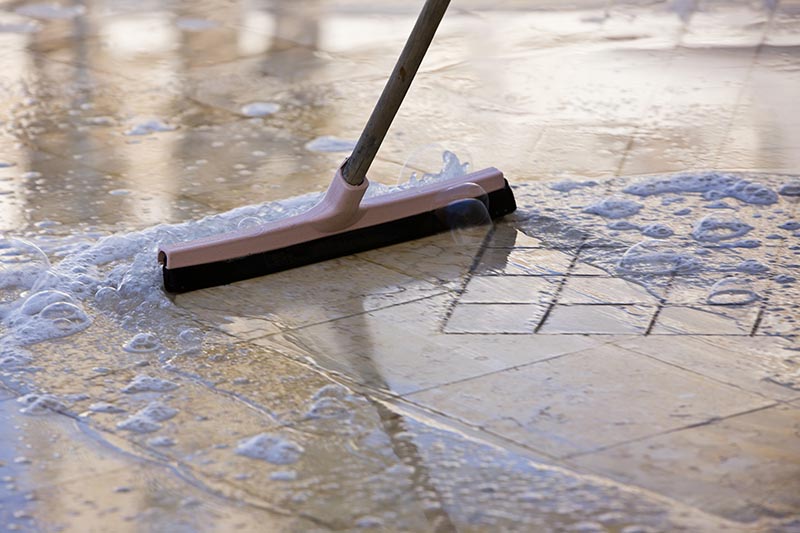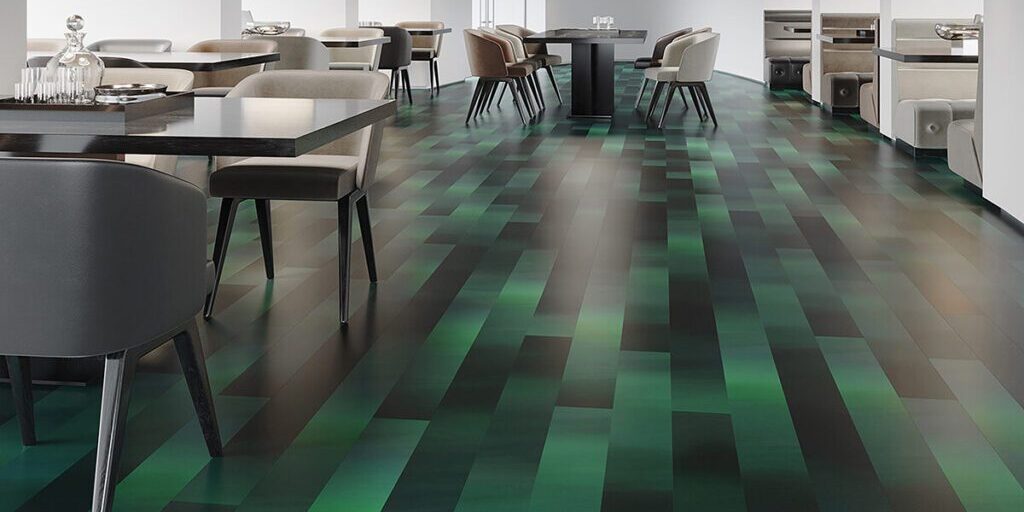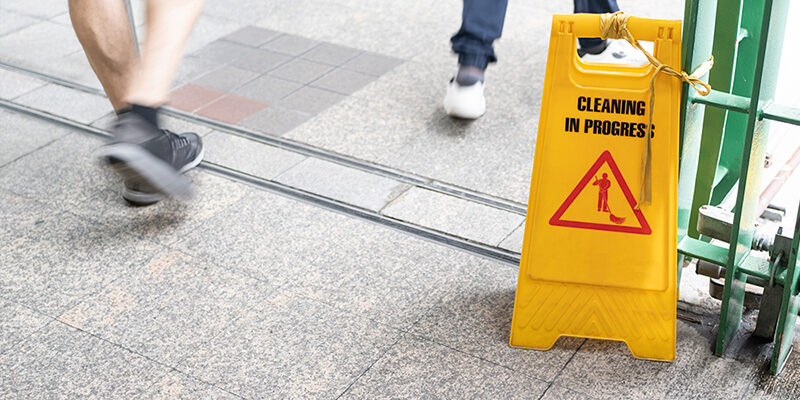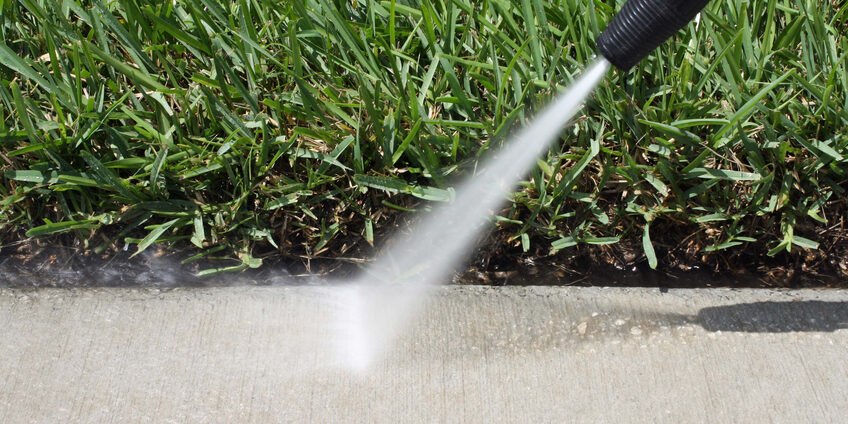Advice on Tile and Stone Floors

Tile and stone floors are attractive and long lasting—as long as they’re cared for properly. Unfortunately, clients often wait too long before calling a cleaning professional to come maintain their floors. Floor care expert Dane Gregory took part in the following interview to provide what cleaning technicians need to know about maintaining tile and stone and what they can do to extend the life of this type of flooring for their clients.
Q: What are the differences between ceramic tile and stone floors?
A: Ceramic tile is a manufactured product in which natural minerals have been pressed together with hydraulic pressure in a press machine. Stone is a natural product taken from the ground, wherein minerals have been pressed together by the heat and pressure of the earth over long periods of time. Ceramic tiles can be produced to look very much like natural stone.
Q: How can you differentiate between ceramic tile and stone floors?
A: Compare the patterns on different tiles to see if they are similar or exactly the same. If the patterns on the different tiles are similar but not identical, the tiles could be made of either stone or ceramic. If the patterns match exactly, the tiles are most likely ceramic or another fabricated material. However, visually identifying these differences can be challenging because ceramic tile and stone can look comparable, especially with polished (shiny) materials.
Do not rely solely on visual identification unless you have a lot of experience with these types of tiles. Another option for identifying the material is a porosity test—most manufactured tile is not porous, whereas natural stone sometimes is.
Q: What are some typical challenges with cleaning and maintaining ceramic tile and stone floors?
A: The biggest challenge is that customers often wait too long before calling a professional for cleaning and maintenance, so the soil load is significant.
Another challenge is that customers have cleaned their flooring with a household cleaner for years, which has left detergent residue that attracts even more soils. As most professionals are aware, household cleaners are not neutral (that is, they do not have a pH of 7) and, therefore, need thorough rinsing after cleaning, which hasn’t been done.
The buildup is even more pronounced in the grout, which is not of the same texture as the tiles and releases soils very differently. The grout acts as a valley between the tiles, and soils are drawn to those low-lying areas.
Because of the grout’s low position, cleaners need to think about the tools they are using. Tools such as dust mops are flat, but tiled floors are not. Homeowners who use flat tools are actually driving dry soils into the grout. Adding water from a spray mop afterward creates mud in the grout joints, making cleaners’ jobs more difficult when they finally do arrive.
Q: Tell us about the types of grout that cleaners encounter. Which are easiest to maintain? What can clients do to make routine maintenance easier?
A: The three types of grout are cement based, epoxy, and furan resin. The first two varieties are usually found in residential and commercial buildings. Furan resin grout is mostly found in commercial environments such as meat-packing facilities and hospital operating rooms.
Cement-based grout is most popular and is used in a variety of residential and commercial installations. The problems with cement-based grout are the amount of soils that adhere to its surface and its porosity, which allows liquids to penetrate below its surface, causing stains. Cement-based grout should be sealed to prevent liquids from penetrating it.
Epoxy grout is a substance resembling plastic that doesn’t retain soils and cannot be penetrated by liquids or dirt in any way. This grout is the easiest to maintain, but because installation requires that a catalyst or hardener be used in the mixing process, it is difficult for the tile setter to install.
Clients can make routine services easier by substituting a broom for a dust mop. They should regularly use a broom to get into the low-lying area of the grout, removing dry soils before they get wet and become difficult to get rid of. Clients can also use a proper neutral cleaner during regular cleaning to keep detergent residue from attracting additional soils.
Q: Why does grout get so dirty compared to the rest of the floor?
A: Grout sits below the surface of the tiles; water finds the lowest point and brings any soils with it. Those soils are then added to the cooking and body oils that most homes have within the air, which settle onto the flooring.
Most soils are held into the grout by detergent residue when household cleaners are not rinsed properly. In fact, the same soils are found in both carpet and grout—carpet just hides the soils better than grout does.
Q: Can you list and describe the types of planned maintenance programs cleaners should use?
A: Initial maintenance is the first process. A common problem with new installations, for example, is grout haze. This occurs when the installation crew uses only water to remove the cement debris that has spread over the flooring while the grout is “floated” into the gap between the tiles. Once dried, this haze forms a thin layer of concrete on top of the tiles. Acidic products work well to remove this type of residue, but cleaners should be careful not to get acid into the grout joint itself.
Routine maintenance is the process most homeowners, maid services, and building service contractors perform frequently to remove daily or weekly soil buildup. The key here is to clean effectively with neutral cleaning products to limit any detergent residue.
Interim maintenance is done when routine services are no longer effective or practical. An example includes using a narrow grout brush with a neutral cleaner to service the low areas of the grout joints. This is done more frequently than restoration maintenance but less frequently than routine maintenance.
Restoration maintenance is needed when the soils on the flooring get out of hand and when either routine or interim maintenance can no longer remove them. Implementing lower production rates, combined with strong detergents and large amounts of water, are usually needed to completely remove the soils. Because of the potent detergents and the large amount of water needed for rinsing, take special precautions to avoid splashing the walls, furniture, or appliances by masking off areas adjacent to the flooring. Also, be careful with high-pressure rinsing, as this can cause grout to break off and be vacuumed out of the grout joint. All grout lines should be checked thoroughly before high-pressure rinsing.
Q: What are your top three cleaning and restoration tips for ceramic tile and stone floors?
A: First, evaluate the flooring for damage before you begin maintenance. Document the floor’s current condition, including the floor characteristics, installation issues, and damaged areas. Extra minutes here can save hundreds or thousands of dollars later.
Second, use high-quality products for all maintenance. Many times, a good neutral cleaner and heavy scrubbing action are all that’s needed. Don’t automatically use strong detergents in a light soil situation where they may not be appropriate—match the detergent to the soil load.
Finally, if using pressure tools, make sure that the flooring can handle the amount of pressure you plan to use. Even though grout is similar in composition from job to job, each grout joint is a one-off construction project. Too much water added into the mix ratio during installation can cause a professional cleaner huge headaches. This extra water can create a large pore structure, allowing liquids to penetrate more easily and deeper than in proper installations. Grout with a larger pore structure will also require more sealer to completely fill those spaces.
Dane Gregory is national sales manager for Carpet Cleaner America and is an approved IICRC instructor for the Floor Care Technician and Stone, Masonry, and Ceramic Tile Technician classes. He is also approved in the Carpet Cleaning Technician, Upholstery and Fabric Technician, and Commercial Carpet Maintenance Technician classes. He can be reached at [email protected] or [email protected].












